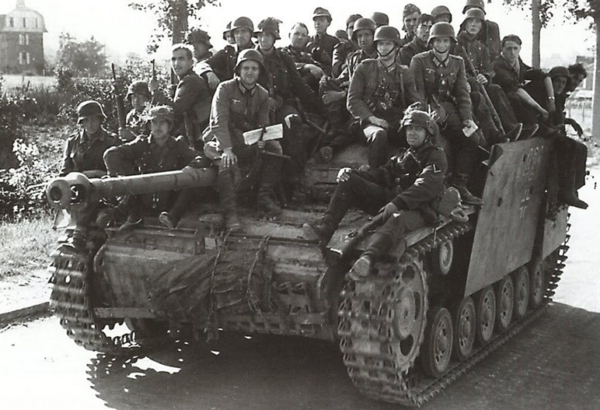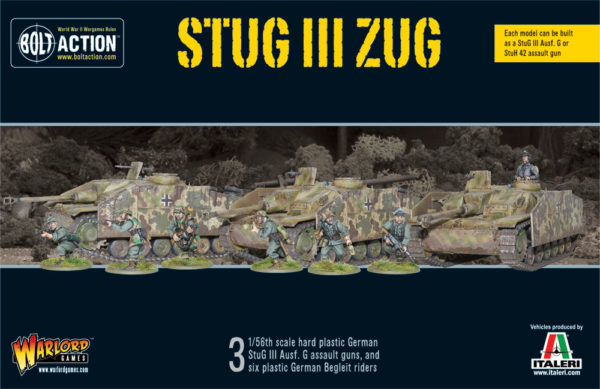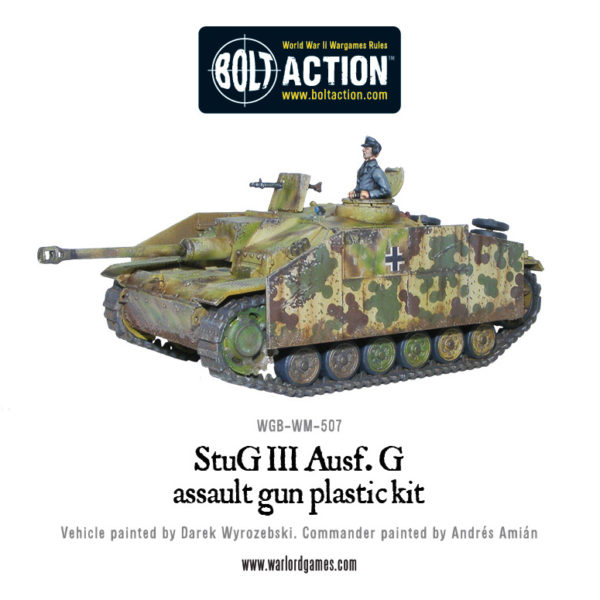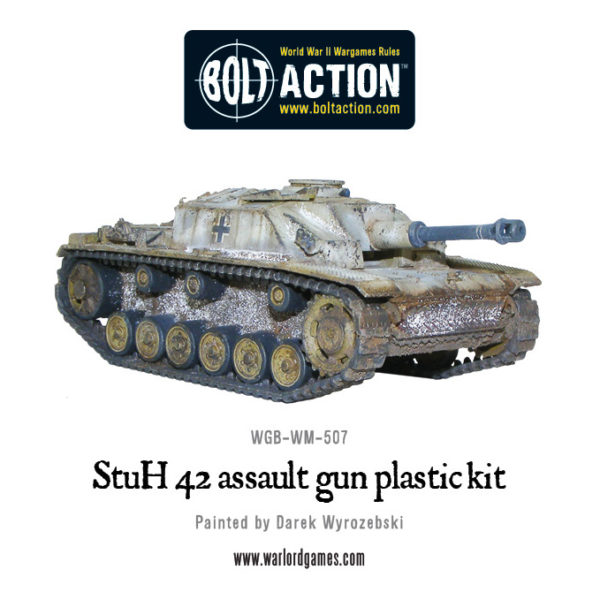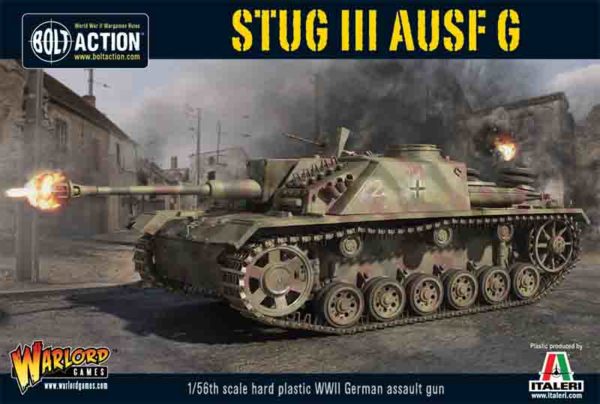The Sturmgeschutz (StuG) III Ausf G was based on the successful Pz.Kpfw II chassis and was Germany’s most produced fighting vehicle, killing more enemy armour than both the Panzers and Tiger tanks.
The tank was designed to accommodate more ammunition than its predecessors and the crew compartment was strengthened. The crew now had a much better escape route, thanks to having a hatch for the driver, gunner and commander. If the tank was somehow flipped, there was an extra escape hatch situated underneath the vehicle. The StuG III had good frontal armour, and coupled with its low profile this made it ideal for performing ambushes.
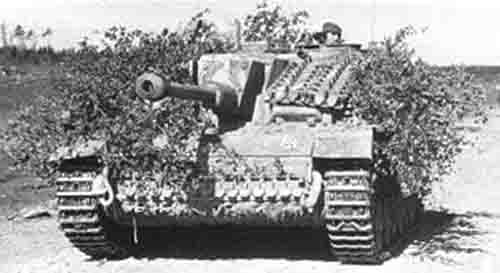
Originally designed as a mobile light armoured gun for infantry support, the tank would go on to be one of the great tank hunters of the war. It was armed with an efficient and powerful 75mm gun and had a cupola mounted MG42 for close defence when needed. The German HEAT (High Explosive Anti-tank) round was utilised to great effect in the StuG, capable of tearing through enemy armour with ease. The StuGs were welcomed by their infantry comrades, supporting their attacks with HE shells or knocking out enemy tanks to the extent that by the end of hostilities, they had amassed more kills than any other German vehicle.
The previous versions of the StuG had weak sides, roof and rear armour and also suffered from lack of visibility due to the way the vision slits were designed. Infantry had to be kept nearby the vehicles due to this problem, as they were vulnerable to enemy infantry attack. This changed when the Ausf G was introduced including much improved vision for the tank crews. The assault gun featured reinforced frontal armour and had a sleek, low profile, which helped it to hide itself when needed. These vehicles were often deployed under camouflage to hide them from aircraft attack.
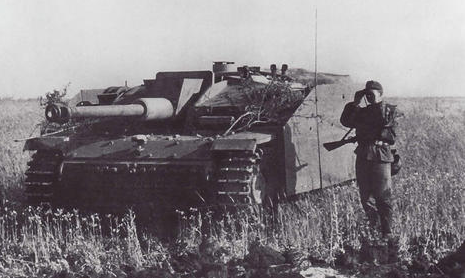
The vehicles were used in all campaigns the Germans were committed to, fighting not just in Norway and the Eastern Front but also in Egypt and Africa. The vehicle was also given over to Germany’s allies. In the battles with the Soviet Union, the Germans supplied a number of StuGs to the Finnish army. In 1944 around 29 assault guns were delivered, and when combined with the 59 StuG IVs the Finns already possessed, managed to kill 87 Soviet tanks with the loss of only 8 StuGs!
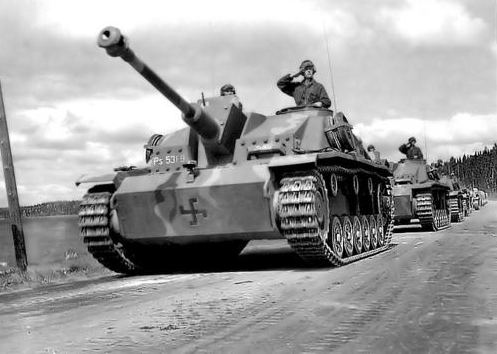
The Soviets themselves saw the potential in these assault guns and even managed to create one of their own. It was built on the designs of a captured StuG III and Panzer III chassis, which was then fitted with a 76.2mm S-1 AT gun, attaching more armoured plates for added protection.
Stuh 42 Assault Gun
The Germans and their allies still needed a decent vehicle to give them adequate fire support. In 1942 the answer came in the form of the Sturmhaubitze 42 (Stuh 42). The assault gun was armed with a 105mm howitzer.
The main armour was bolstered with the addition of schurzen, which were armoured skirts attached to the sides of the tank to protect it from anti-tank rifle. They also helped protect the tank’s main hull and turret from shaped charges, which would explode upon impact with the schurzen, rather than the tank body.
In games of Bolt Action the armoured schurzen can be fitted to both versions of the StuG III – in game terms this negates the +1 penetration bonus for a Shaped Charges hitting the vehicle on the side. StuG Ausf G’s are equipped with a casement mounted forward facing heavy anti-tank gun, coupled with the armoured skirts and a MMG, the Stug is a solid tank-hunting medium tank, whilst the Stuh 42 and its medium howitzer makes a great accompaniment for your advancing infantry.
Don’t forget that in the Stug Zug Box Set, we include six plastic Begleit Riders (using the plastic sprues from our forthcoming Panzergrenadiers!) – the rules for which can be found in our recently released ‘Ostfront‘ Theatre Book!
